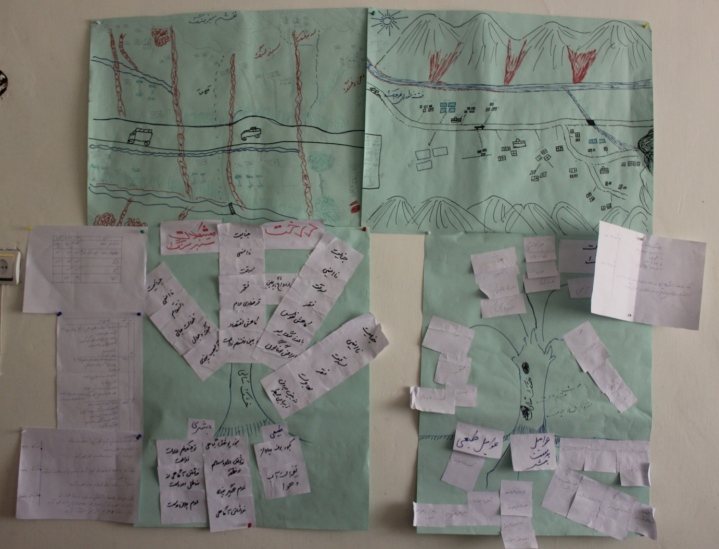Sustainable strategies in Humanitarian Relief Work
Guest contribution by Medair
Everyday people are confronted with images of the Middle East crisis, none of which shows an improvement of the humanitarian situation on the ground or a positive change in the dynamic of the conflict. This crisis is one of a series of chronic conflicts that the international community is currently confronted with. As an organisation focused in the area of humanitarian relief work, Medair is active in several of these crisis scenarios.
Those most vulnerable are the hardest hit
People that are economically disadvantaged in a society are generally the ones worst prepared for catastrophic situations and less capable of handling them: their livelihood conditions are easily impaired or destroyed due to unforeseen events, making an autonomous recovery usually hard to achieve. In addition, situations of prolonged conflict reinforce the incapacity of the governing powers to act; in combination with structural poverty, this often increases the vulnerability of specific groups in the population. This means that the weakest parts of society tend to be disproportionally affected in such cases.
The Disaster Risk Management approach
Together with emergency relief, the resilience of specific groups is strengthened through Medair’s programs with the application of the Disaster Risk Management approach. This concept and related methods are seen as part of the humanitarian emergency relief in a catastrophe situation. The goal is to reestablish the living conditions of the affected communities and, at the same time, increase their capacity to face and recover from future crisis situations. This way, by following the “Build back better” principle, the assistance required in a subsequent emergency becomes smaller and the cycle of dependency can be gradually broken.
The case study of a project in the central highlands of Afghanistan
Medair is active in the central highlands of Afghanistan, where the communities living in these mountainous regions are extremely exposed to natural hazards such as flash floods and extended dry periods. The most important agricultural product in this region is wheat, which depends on proper irrigation and sufficient rainwater. Drought periods have therefore a very negative effect on food production and safety. At the same time, the capacity that these village communities have to face natural catastrophes is very limited due to poverty, insufficient education and know-how about methods to reduce risks from this type of events.
Sustainability is incorporated in the program structure
The core mission of Medair is to save lives, alleviate suffering and assist those affected by crisis to rebuild and reestablish their livelihood means. To achieve this, the organisation implements multisector, need-oriented programs in coordination with other actors. A central aspect is the sharing of know-how between Medair experts and local stakeholders. In addition, the participation and ownership of those affected is seen as one of the pillars of sustainability.
In the above mentioned project in Afghanistan, the village communities were involved in the initial phase of assessing needs and then regularly involved throughout the project and in the decision process. The goal of the project was to improve the food situation and safety over the long term. To put them in a position where they could strengthen their agricultural and husbandry production, the communities were trained in techniques for cultivation, irrigation and soil management, coupled with methods to contain the environmental risks posed by flash floods and other natural hazards.
The local population was involved in the practical work, as a suitable way to build new know-how and skills while resorting to locally available resources. Through money-for-work activities, is was possible to help the most deprived households to bridge their livelihood constraints and, at the same time, to build water storage dams and terraces. These measures served to minimize the effects of water variation, promoting the infiltration of water and increased water levels in the soil, thereby improving the reliability of irrigation in the fields and decreasing soil erosion.
The project was funded primarily by the Canadian Food Grain Bank (CFGB) in partnership with the Mennonite Central Committee (MCC). It was conducted in close joint work with the local, province and state authorities and with other humanitarian and development agencies that are active in the same project areas.
Looking for the most effective path
The decision on how Medair reacts to an emergency situation is based on a first analysis of needs, vulnerability and capacity. In addition, the most effective way to mitigate humanitarian catastrophes is investigated. If Medair is already conducting a program in the affected region, the organisation is involved before, during and after the crisis in order to decrease the risks to affected individuals and groups. Medair works hand-in-hand with the local population and authorities, to provide short and long-term support to people affected by chronic conflicts and natural catastrophes.
There is no question that a long-term, sustainable program planning is important in humanitarian work, particularly in crisis situations. However, each emergency situation and each context are different and bring new challenges to a humanitarian organisation. In some circumstances, it is easier to plan sustainable interventions; in other cases, harder. As such, it is important to address these interventions with vision, creativity and together with strong partners.

